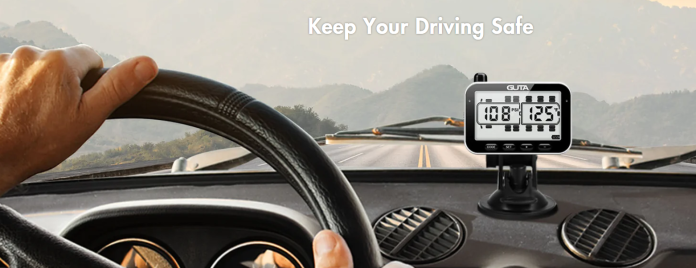Having proper tire pressure is crucial for vehicle safety and performance. Tire Pressure Monitoring Systems (TPMS) are vital in maintaining optimal tire pressure, ensuring a smooth and secure driving experience. This comprehensive guide will explore everything you need to know about TPMS: their importance, how they work, the different types available, benefits, troubleshooting, maintenance, and future developments.
What is a Tire Pressure Monitoring System?
A Tire Pressure Monitoring System (TPMS) is an electronic system designed to monitor the air pressure inside vehicle tires. It provides real-time information to the driver, alerting them when tire pressure falls below or exceeds the recommended levels. By constantly monitoring tire pressure, TPMS helps prevent accidents, tire blowouts, and premature tire wear. Check out more detalis on Guta website.
Importance of Tire Pressure Monitoring Systems
Maintaining the correct tire pressure is essential for several reasons:
- It ensures optimal traction and handling, improving vehicle control and reducing the risk of accidents.
- Properly inflated tires contribute to fuel efficiency, saving money and reducing environmental impact.
- TPMS promotes tire longevity by preventing overinflation or underinflation, which can lead to uneven wear and reduced tire lifespan.
How Does a Tire Pressure Monitoring System Work?
TPMS comprises sensors, a receiver or control module, and a display unit. Sensors are typically installed inside each tire, either on the valve stem or the wheel. They measure tire pressure and transmit the data wirelessly to the control module. The control module then analyzes the information and alerts the driver if tire pressure deviates from the recommended range. The display unit, usually located on the dashboard, provides visual or audible warnings to the driver.
Types of Tire Pressure Monitoring Systems
There are two main types of TPMS: direct and indirect. Direct TPMS uses pressure sensors inside each tire to monitor real-time pressure readings. It provides more accurate data but requires sensor installation in each tire. Indirect TPMS, on the other hand, relies on the wheel speed sensors of the Anti-lock Braking System (ABS) to indirectly detect under-inflation. It is less precise but doesn’t require additional sensors.
Benefits of Using a TPMS
Using a TPMS offers numerous benefits for drivers:
- It enhances safety by providing immediate alerts when tire pressure is outside the recommended range. This allows drivers to take prompt action and avoid potential hazards.
- TPMS helps optimize fuel efficiency by adequately inflating tires and reducing rolling resistance.
- It promotes longer tire life and minimizes the risk of tire failure.
Common TPMS Issues and Troubleshooting
While TPMS systems are generally reliable, they can encounter issues. Common problems include sensor failure, battery depletion, inaccurate readings, or malfunctioning display units. Troubleshooting TPMS issues often involves:
- Checking sensor batteries.
- Verifying sensor placement.
- Recalibrating the system.
- Seeking professional assistance for repairs or replacements.
How to Maintain and Calibrate a TPMS
To maintain a TPMS, regular inspection and maintenance are necessary. This involves checking tire pressure using a reliable gauge and ensuring proper inflation according to the manufacturer’s recommendations. Calibrating TPMS may require resetting the system after tire rotations or replacing tires. Following the manufacturer’s guidelines for maintenance and calibration is crucial to ensure accurate readings and optimal performance.
Best Practices for Tire Pressure Maintenance
Maintaining proper tire pressure extends beyond TPMS. It’s essential to regularly check tire pressure using a manual gauge, preferably when the tires are cold. Proper tire inflation should align with the vehicle manufacturer’s specifications, found in the owner’s manual or on a sticker on the driver’s side door jamb. Additionally, tire inspections for signs of wear, punctures, or damage should be performed regularly.
TPMS Laws and Regulations
Many countries have recognized the importance of TPMS and implemented laws and regulations mandating its use. These regulations typically require all new vehicles to be equipped with TPMS. Drivers need to be aware of the specific regulations in their region and ensure compliance.
Conclusion
Tire Pressure Monitoring Systems (TPMS) are crucial for maintaining optimal tire pressure, ensuring safety, fuel efficiency, and longevity. By constantly monitoring tire pressure levels, TPMS provides real-time alerts to drivers, enabling prompt action. Regular maintenance, calibration, and adherence to manufacturer guidelines are essential for TPMS effectiveness. As TPMS technology evolves, we expect even more advanced features that enhance vehicle safety and performance.
Other Technical Reviews:- Reviews












